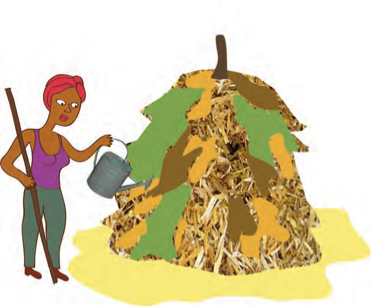Homestead Food Production
Homestead food production or gardening is widely used all over the world and is a very important option for food and nutrition security. Vegetables, fruits and spices are most commonly grown in homestead gardens, often supplemented with livestock, poultry or small scale fish ponds. Gardens can provide easy access to fresh products and depending on the proximity can easily be taken up by women in combination with household chores. Larger, more specialized gardens, focusing on commercial purposes are called market garden, although it is often a combination. Lately there is growing interest in and experiences with gardens in urban settings, making use of roofs, parks or vacant industrial buildings or greenhouses.
Characteristics of Homestead Food Production:
|
Contents
[hide]Advantages of homestead food production
Social benefits:
- can be done on small plots of land, both in rural and urban areas (even for people who don’t own land)
- increases availability, accessibility and utilization of nutritious food, offering a supplement to staple foods on a continuous basis. Homestead gardening has the potential to decrease ‘hidden hunger’.
- can easily be combined with day-to-day domestic activities and employment patterns of women. Therefore it can contribute to the empowerment of women and the nutritional situation of women and children (increased consumption of fresh fruits and vegetables).
Economic benefits:
- Growing your own fruits and vegetables is less expensive than buying products on markets. In addition a share can be sold, providing the household with livelihood opportunities and an additional source of income.
Environmental benefits:
- delivers a range of ecosystem services, especially when ecological friendly approaches are used. This is often the case, since little external inputs are used. Gardens are often diverse, growing multiple crops and plants and indigenous species, hereby contributing to biodiversity and conservation of natural resources. Gardens can provide a habitat for animals and organisms, contribute to nutrient recycling, land conservation and fertility, a reduction of soil erosion and enhances pollination. The use of plant material as fodder for animals and animal manures as compost to fertilize plants reduces the needs for chemical fertilizers. Thereby, gardens can provide a source for kindling and alternative sources of fuel, manure, building materials and animal feed.
Increasing benefits of homestead food production
Introducing applied techniques and improve knowledge can make home stead food production more beneficial, efficient and effective. Areas and issues to focus on include:
- Market appraisal: meeting market needs, transportation, develop marketing strategies and understanding demand and supply.
- Storage possibilities: to increase ‘shelf life’ and cover needs during shortage period.
- Selection of garden products: involve everyone in the household on what to grow to meet household needs and preferences within the boundaries of available resources
- Adding value: through storage and small scale processing: increasing the livelihood options for rural households.
- Marketing: knowing the customer and the market and improve entrepreneurial skills.
- Organizations: organize and plan the division of tasks, complexity of the garden and products.
- Service and input availability/ development: skills and techniques, seeds, cuttings and seedlings. Fertilizers and other inputs and equipment, packaging material, market information.
Acknowledgements
- FAO, 2011 Livelihoods grow in gardens, Diversification booklet number.
- FAO, 2014. A vegetable garden for all, Self-instruction manual for family horticultural production, fifth edition.
- Ranashinghe, 2009 Manual of Low/No-space Agriculture – cum- family business gardens, RUAF Foundation, International Network of Resource Centres on Urban Agriculture and Food Security and International Water Management Institute.



